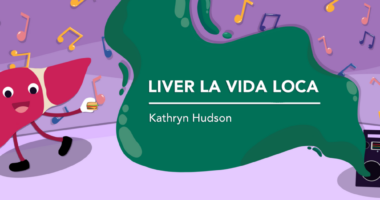Small amounts of alcohol deemed OK in early steatotic liver disease
Limited consumption doesn't elevate risk of advanced illness, study finds

Drinking a small amount of alcohol each day did not raise the mortality risk among people in the early stages of steatotic liver disease (SLD), a group of fatty liver diseases, a population study found.
“We found that patients in the early stages of steatotic liver disease could consume less than 7.4 grams of alcohol a day without elevating their risk for advanced liver fibrosis which is associated with severe health problems including liver cancer, organ failure and even death,” first author Yee Hui Yeo, MD, a clinical fellow in the Karsh division of gastroenterology and hepatology at Cedars-Sinai in Los Angeles, said in a press release.
“That amount is equivalent to about 6 ounces of beer, 2.5 ounces of wine and less than 1 ounce of a distilled spirit, like vodka or tequila,” Yeo noted.
The population study, “Alcohol Intake Thresholds Among Individuals With Steatotic Liver Disease,” was published in JAMA Network Open.
SLD, a group of disorders characterized by the excess fat built up in liver cells, is the most common chronic liver condition in the U.S. There are two main types of SLD — alcoholic and nonalcoholic — based on whether the excess liver fat is caused by high alcohol consumption.
Last year, the names were changed to alcohol-associated liver disease and metabolic dysfunction-associated steatotic liver disease to accurately reflect what causes each disease.
Not surprisingly, alcohol consumption exacerbates SLD progression, which can lead to fibrosis, any degree of liver scarring, or cirrhosis, severe liver scarring, and dysfunction.
While people with severe SLD should entirely refrain from drinking alcohol, little is known about its impact in the disease’s early stages, particularly among those who still consume it.
“A critical gap in our understanding of steatotic liver disease progression has been the lack of concrete data to define a ‘safe’ level of alcohol consumption for those patients who can’t quit drinking,” Yeo said. “Our study addresses this unmet need by providing empirical evidence on the relationship between alcohol intake levels and the progression of early-stage disease.”
Survey results
Data were obtained from the U.S. National Health and Nutrition Examination Survey III database, which included 2,834 individuals with SLD, of whom 51.8% were male. Based on fibrosis-4 index (FIB-4) scores, the researchers divided the patients into two risk levels for advanced fibrosis: low (79.2%) and intermediate or high risk (20.8%).
Patients in the intermediate or high-risk groups were predominantly male and had a higher prevalence of metabolic disorders, which include diabetes, obesity, and high cholesterol.
The overall follow-up duration was 66,299 person-years, calculated by multiplying the number of individuals in the study by the duration of follow-up for each individual.
During follow-up, the mortality rate was four times higher among people with an intermediate or high risk for advanced fibrosis than those in the low-risk group — 4,342 vs. 1,099 per 100,000 people.
After adjusting for demographic characteristics and metabolic factors to identify an association between alcohol consumption and mortality in the low-risk group, any alcohol consumption exceeding 7.4 grams per day was linked with an elevated risk of death.
Among those with an intermediate or high risk for advanced fibrosis, the more alcohol consumed, the higher the mortality risk.
The researchers proposed that the FIB-4 scores can help clinicians advise SLD patients who choose not to stop drinking alcohol.
“There has been ambiguity about the extent to which alcohol consumption exacerbates steatotic liver disease,” Yeo said. “We want to reduce this uncertainty by providing evidence-based information. We favor abstinence as the safest course of action for these patients.
“But for those who are not able to stop drinking, these findings provide concrete guidelines for making decisions about their health and lifestyle,” Yeo continued.
Shelly Lu, MD, the women’s guild chair in gastroenterology and director of the division of digestive and liver diseases at Cedars-Sinai, added, “While it is still best to counsel abstinence for patients with this liver disease, the study defines a threshold beyond which alcohol consumption can increase mortality. The results provide new guidance for clinicians and patients.”






